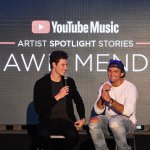
brands across the world are finding ways to get the Gen Z to spend. Source: Shutterstock
How brands are harnessing the spending power of Gen-Z
MOST Instagram users are familiar with the fashion brand, Revolve.
They have successfully used celebrities and mega influencers to build awareness and turn the label into a billion dollar company. Now they have launched a new fashion label, Superdown.
It’s a collection focused specifically on meeting the needs of Gen Z, with a more accessible price point and a marketing strategy with heavy investment in influencer marketing.
This is representative of a wider shift in the industry. Brands are adapting their products and marketing strategies to cater to this emerging consumer cohort, realizing the need to differentiate from the Millennial generation that came before.
True digital natives with eight-second attention spans, Gen Z are the next big challenge for marketers.
But with the eldest turning 22 (the youngest is 4 years old) this year and their spending power already estimated between US$29 and US$143 billion, understanding their behavior is essential for those who want to capture and maintain their attention.
They are habitual multi-screeners
Whether they’re scrolling Instagram, with one eye still on Netflix, or using their iPad to shop, Gen Z have grown up with a phone in their hand and know how to multitask.
With their attention split across devices, converting them into a captive audience is challenging.
Some brands have managed to use this behavior to their selling advantage. Last year in the UK, fast fashion retailer Missguided partnered with the wildly popular reality TV show, Love Island.
Viewers could see their new favorites on screen in an outfit that was instantly available to them to shop as they watched. The brand received a 40 percent sales uplift as a result. Meanwhile, other brands have struggled to be seen.
Instantly engaging content is of utmost importance. Marketers have a millisecond to stop a scroller in their tracks and need to invest in images and videos that have that power. They are no longer only competing against their business rivals for attention.
Social media is life
With 75 percent of Gen Zers naming their mobile phone the device of choice – and the majority admitting spending three hours a day on social media – a mobile-first social strategy is essential.
Instagram’s steps toward e-commerce provide a big opportunity here. Shoppable tags and ‘swipe up’ on Stories all tap into Gen Z’s expectation of instant information and capitalize on having their attention before it’s lost.
Now the long-awaited ‘Checkout on Instagram’ (launched in the US) gives users the ability to purchase in-app. No link in bio, no redirection.
With less time and more distractions than ever, this streamlining caters to modern consumer behavior. The function is only currently available to a select number of launch partners, so brands have some time to consider how they will maximize this opportunity.
They’re slow to trust
Access to 24/7 news coverage of turbulent global events such as the recession, terrorism, cyberattacks and security breaches has naturally shaped Gen Zers’ thinking and attitudes.
They are cautious and lack trust in large organizations, often including brands. So how can marketers overcome this obstacle?
Transparency and responsiveness are important factors in getting this audience on side. Offering them entertainment, help and advice will also win you favors.
Criteo’s Gen Z report showed that 62 percent of Gen Z like ads that add value to their lives. It’ll not only encourage them to spend more time with your content, but they’ll appreciate the fact that you have earned the right to advertise to them.
With brands only representing 10 percent of Gen Z’s followed accounts, marketers can’t expect to gain access to them all alone.
Influencers help bridge this gap. Considered trusted peers by Gen Z, they are 1.3x more likely to purchase a product recommended by an influencer than by a traditional TV or movie celebrity.
Influencers also tap into their cautious reliance on reviews. 78 percent of Gen Z have read a review when buying a product in the past 30 days. It makes sense, in the age of online shopping and forums, reviews have always been a mere click away.
Despite their lack of trust, Gen Z are open to being advertised to. A study found they were more likely to buy a product after watching a social ad than a millennial – so the outlook is far from gloomy.
The secret is acknowledging their differences in behaviors, priorities, and values and adapting your strategy accordingly.
READ MORE
- Strategies for Democratizing GenAI
- The criticality of endpoint management in cybersecurity and operations
- Ethical AI: The renewed importance of safeguarding data and customer privacy in Generative AI applications
- How Japan balances AI-driven opportunities with cybersecurity needs
- Deploying SASE: Benchmarking your approach








